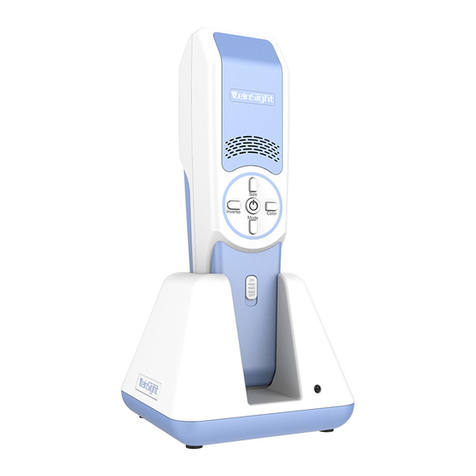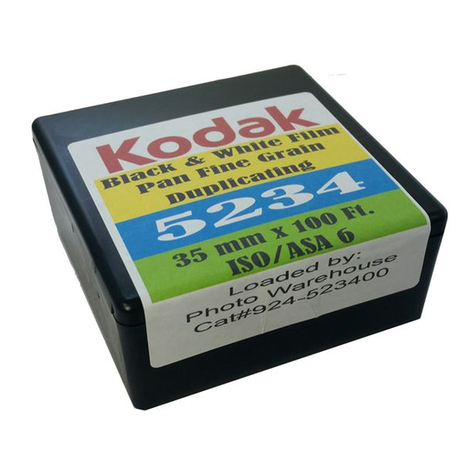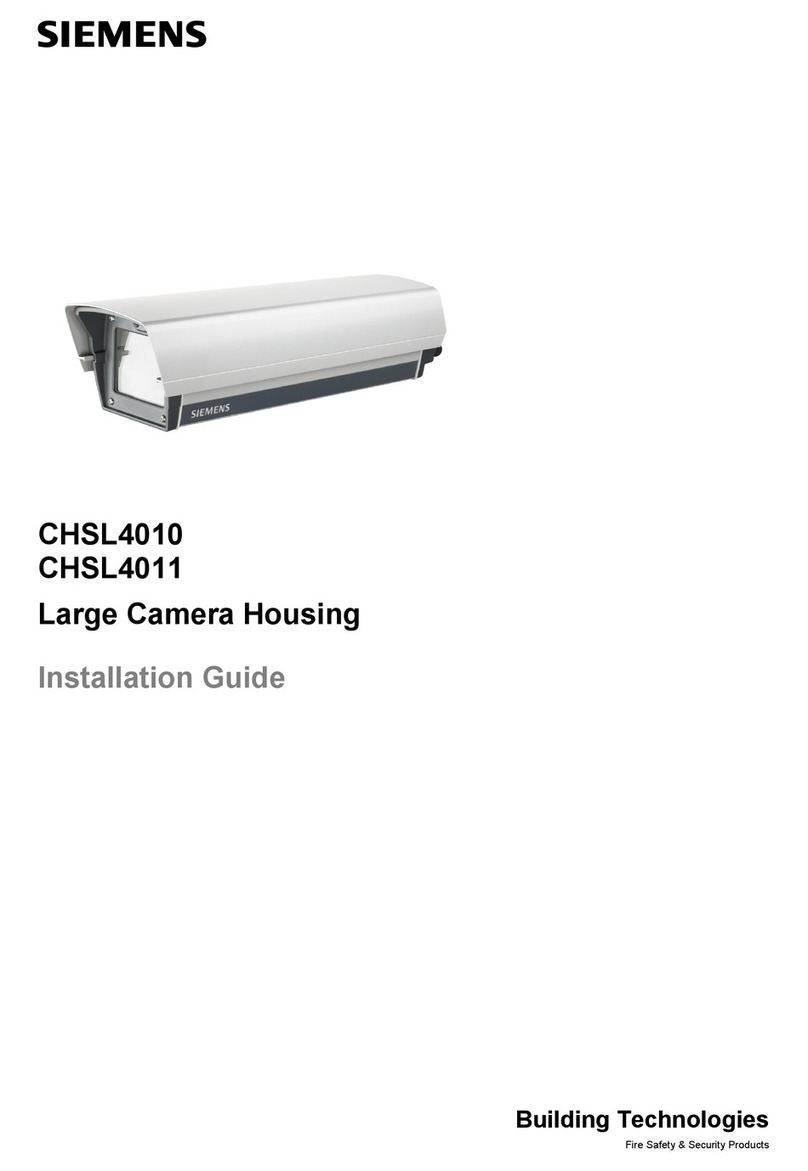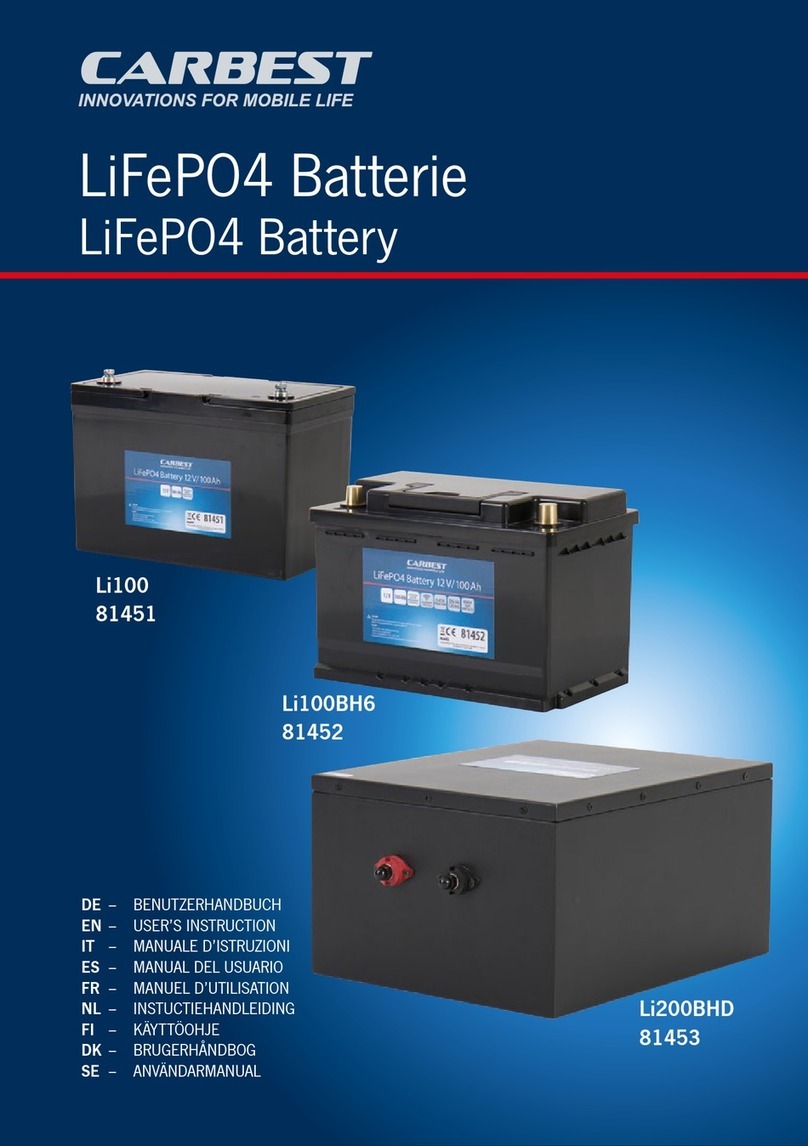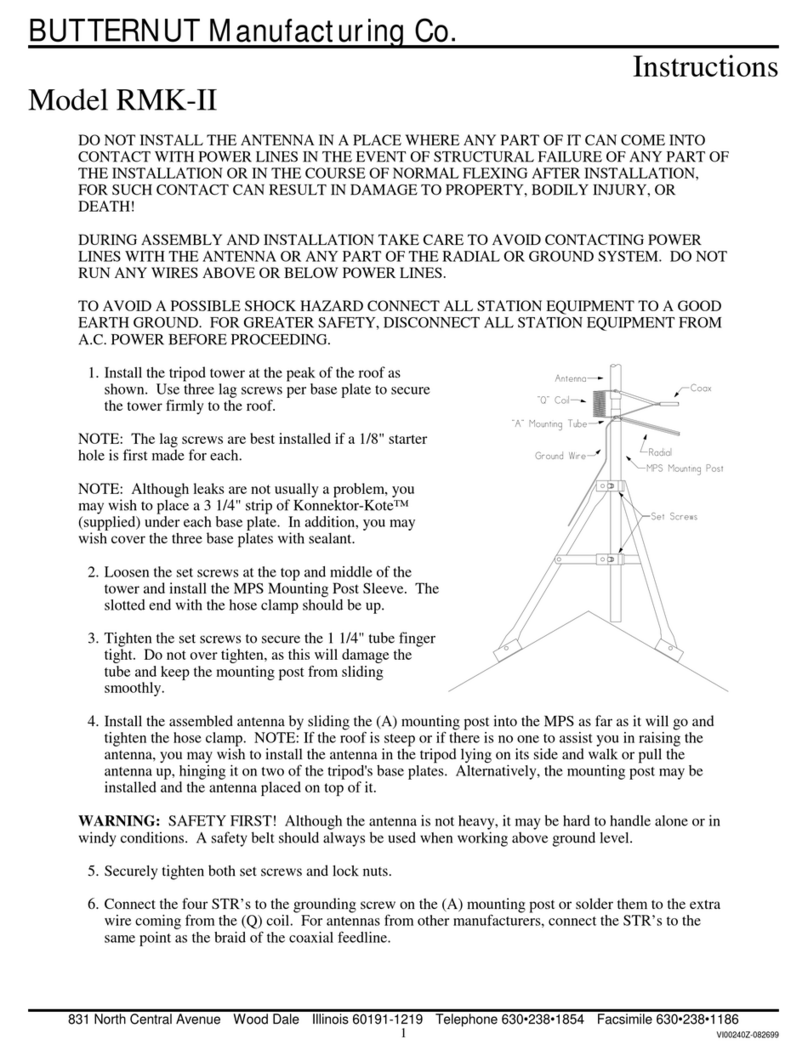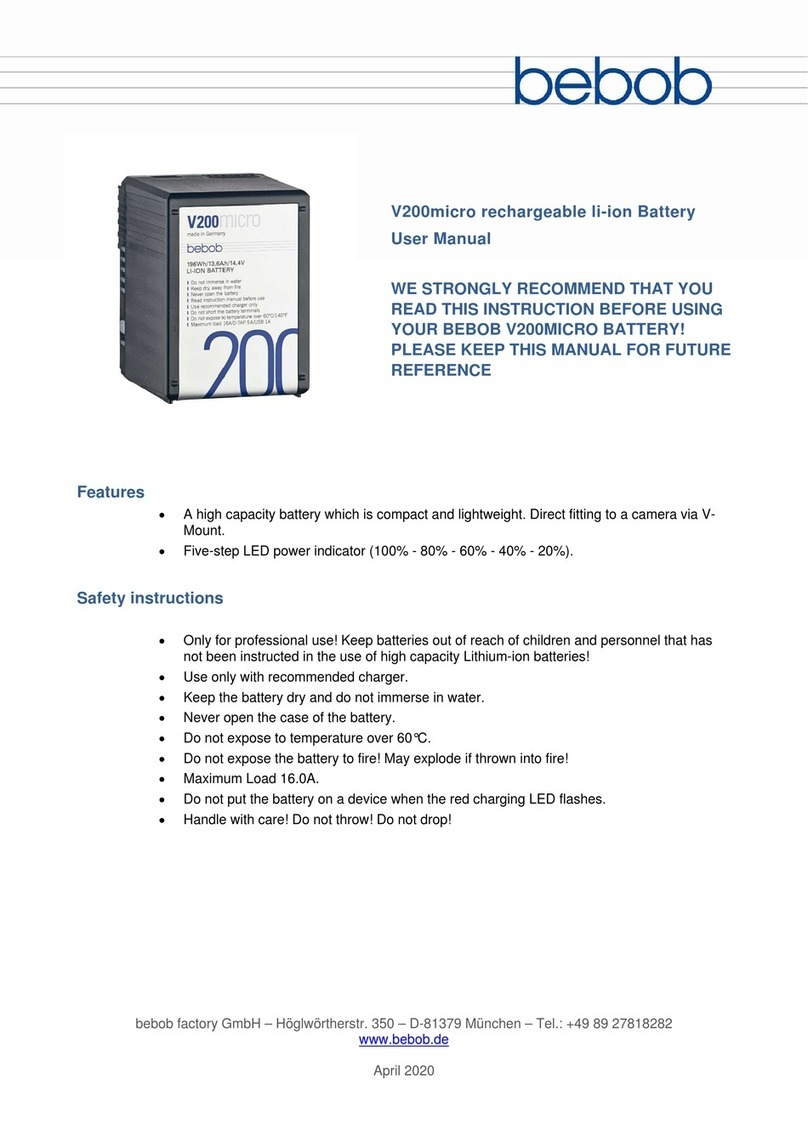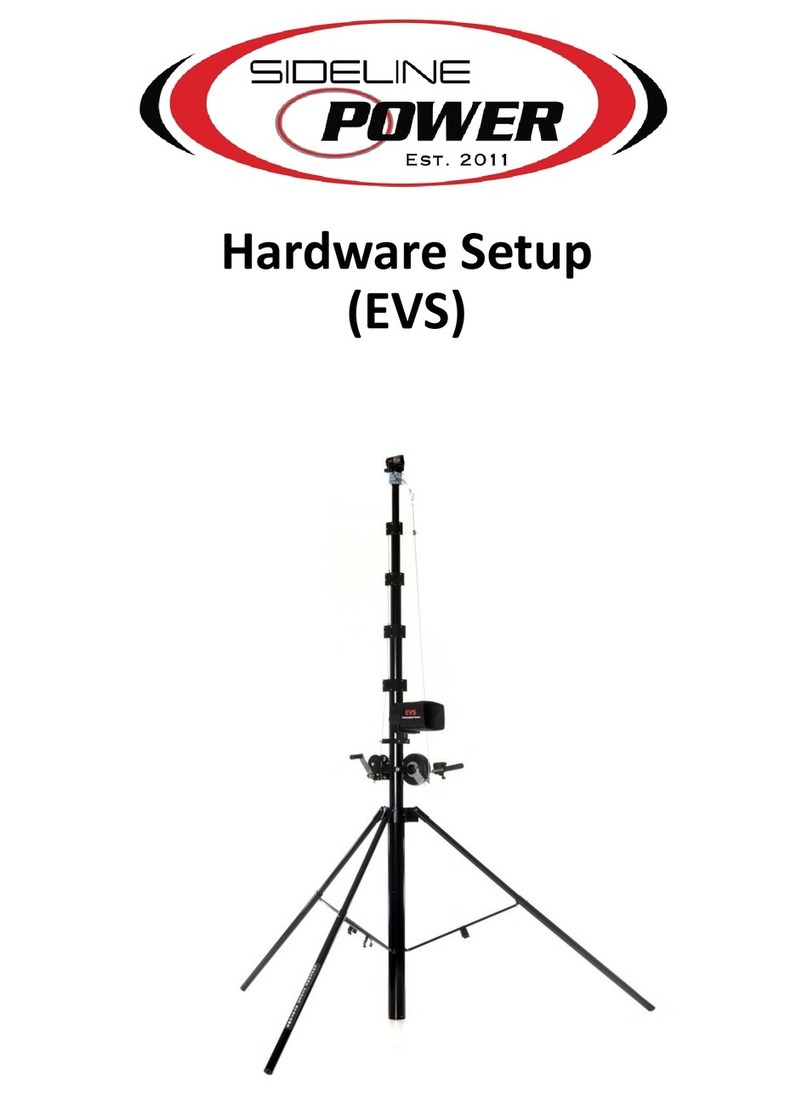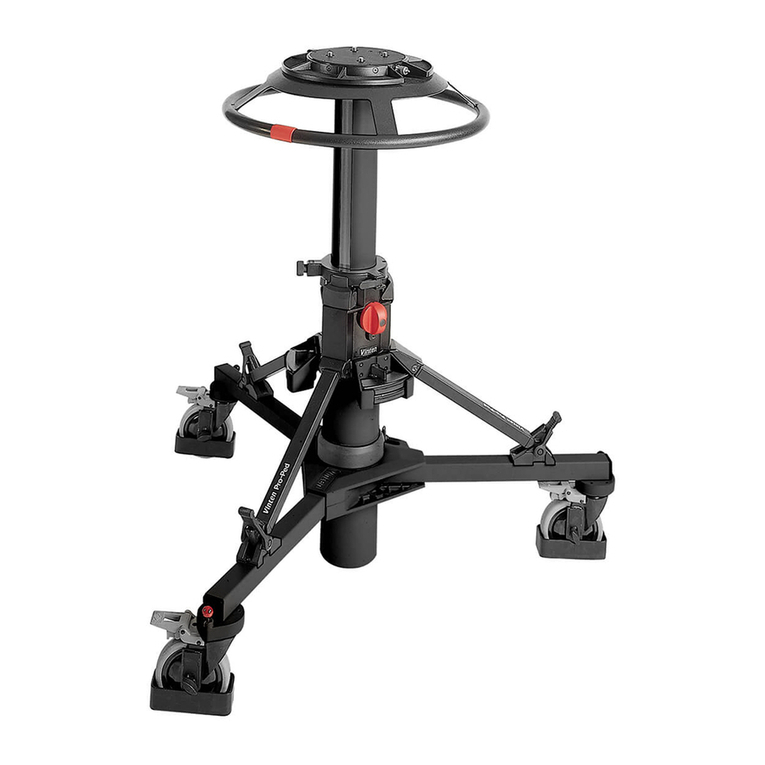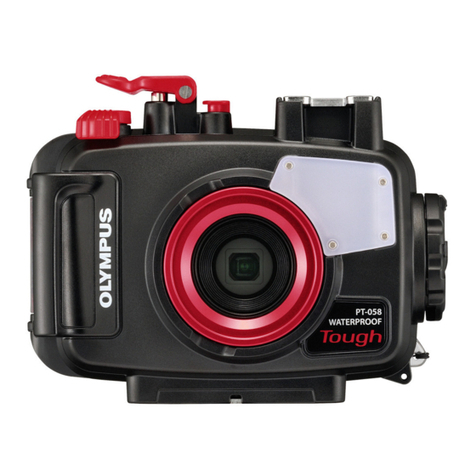DeVilbiss DV6E User manual

EN DV6EB External Battery for DeVilbiss
DV6 series CPAP
Assembled in the USA
Approved for air travel!
ES DV6EB Batería Externa para CPAP
DeVilbiss serie DV6
Ensamblado en EE. UU.
¡Aprobado para usar a bordo de aviones!
FR Batterie externe DV6EB pour le CPAP
série DV6 DeVilbiss
Assemblé aux États-Unis
Approuvé pour le transport aérien !
DE DV6EB Externe Batterieladestation für
DeVilbiss DV6 Serie CPAP
Gefertigt in den USA
Zugelassen für Flugreisen!
IT Batteria esterna DV6EB per l’unità
CPAP della serie DV6 DeVilbiss
Assemblato negli U.S.A.
Approvato per il trasporto aereo!
NL DV6EB externe batterij voor DeVilbiss
DV6-serie CPAP
Gemonteerd in de Verenigde Staten
Goedgekeurd voor vliegreizen!
for air travel!
Approved
0044

EN - 2 A-DV6EB-1
TABLE OF CONTENTS
Important Safeguards...................................................................................... EN - 2
Symbol Definitions........................................................................................... EN - 3
Introduction...................................................................................................... EN - 3
Intended Use............................................................................................... EN - 3
Important Parts................................................................................................ EN - 4
Setup and Operation....................................................................................... EN - 5
Travel Information............................................................................................ EN - 6
Charging the Battery Pack .............................................................................. EN - 6
Care and Maintenance.................................................................................... EN - 6
Product Disposal ............................................................................................ EN - 7
Specifications .................................................................................................. EN - 7
Battery Operation Run Time............................................................................ EN - 8
Guidance and Manufacturer’s Declaration...................................................... EN - 8
IMPORTANT SAFEGUARDS
READ ALL INSTRUCTIONS BEFORE USING THIS
DEVICE.
SAVE THESE INSTRUCTIONS.
THE FOLLOWING SAFETY WARNINGS MUST BE
OBSERVED AT ALL TIMES:
• Do not drop, hit, crush or otherwise abuse the External Battery, as this may result
in the exposure of the corrosive cell contents.
• Do not expose the External Battery to rain or moisture of any type.
• D o notexposetheExternalBatterytoreorextremeheat.Donotincinerate.
Exposure of the External Battery to extreme heat may result in an explosion.
• Do not disassemble or attempt to repair the External Battery. There are no user-
serviceable parts inside.
• Periodically inspect connection cords, connector tips and the power supply for
damage or signs of wear. Discontinue use if damaged.
• Before attempting any cleaning procedures, unplug the External Battery from the
CPAP device and wall outlet.
• DV6EB External Battery is not to be used in an oxygen rich atmosphere. The
DV6EB must be at least 3.3 feet (1 m) from CPAP and oxygen source when using
supplemental oxygen.
• Use DV6EB only with DeVilbiss 120 watt AC power supply (DV68-620). Do not
use with DC car adapter cord.
• Recommended maximum time between charges = 1 year
• Recommendation:Storethebatterybetween-20˚Cand+20˚Cinalowhumidity,
no dust and no corrosive gas atmosphere. Store the battery with a state of charge
between 50-70%.
• This device contains electrical and/or electronic equipment. Follow local governing
ordinances and recycling plans regarding disposal of device components.
Battery Pack Safety Warnings:
• Do not open or dismantle batteries.
• Donotexposebatteriestoheatorre.Avoidstorageindirectsunlight.
• Do not short-circuit a battery.
• Do not store batteries haphazardly in a box or drawer where they may short-circuit
each other or be short-circuited by other metal objects.
• Do not remove a battery from its original packaging until required for use.
• Do not subject batteries to mechanical shock.
• In the event of a battery leaking, do not allow the liquid to come in contact with the
skin or eyes. If contact has been made, wash the affected area with copious
amounts of water and seek medical advice.
• Do not mix batteries of different manufacture, capacity, size or type within a
device.
• Keep batteries out of the reach of children.
• Keep batteries clean and dry.
• Use only the battery in the application for which it was intended.
• Do not store batteries longer than 1 year without recharge.
• The battery must be recycled or disposed of properly.
ENGLISH................................................................................. EN - 2
ESPAÑOL ............................................................................... ES - 10
FRANÇAIS.............................................................................. FR - 18
DEUTSCH ............................................................................... DE - 26
ITALIANO................................................................................ IT - 34
NEDERLANDS........................................................................ NL - 42

EN - 3A-DV6EB-1
SYMBOL DEFINITIONS
Symbols: Explanation of symbols that are on the External Battery, battery pack and/
or in this manual.
External Power Present
Indicator Refer to Operating Instructions
Error Attention, Consult Instruction
Guide
Check Status Button Manufacturer
C US
TUV Rheinland C-US approval
mark DC Jack
Catalog Number EC REP European Representative
Serial Number European Rep CE mark
Class II electrical protection-
double insulated Type BF equipment-applied part
RTCA / DO-160 Section 21 Category M for battery use only
IP21
IngressProtection-Protectedagainstngeraccesstohazardousparts;
protected against vertically falling water drops
This device contains electrical and/or electronic equipment that must be
recycled per EU Directive 2012/19/EU-Waste Electrical & Electronic
Equipment
Battery Pack Markings
Attention, Consult Instruction
Guide UN Transportation Test
Refer to Operating Instructions
Li-ion
Recycling Symbol
Mark of conformity to applicable
European Directives
Dispose of this product according
to local regulations.
Regulatory Compliance Mark of
Australia and New Zealand.
For Canada & USA: Please call
1-800-822-8837 for information on
how to recycle this battery
UL Recognized for Canadian
and US market China RoHS
Recycling Symbol Taiwan Regulatory Compliance Mark of
Japan
GOSTRCertication EurAsian Conformity Mark
KoreanCertication
INTRODUCTION
The DeVilbiss DV6EB External Battery gives you the freedom to use your DV6 series
CPAP when AC power is not available, when traveling by air, or any time portability is
desired.
The DV6EB includes one battery pack. An optional second battery pack may be
purchased for longer use times if desired.
Intended Use
The DV6EB External Battery is an accessory to DV6 Series CPAP devices. It is
intended to provide backup power in the event of a power outage or continuous
standalone power for portable CPAP use (camping, airline, travel).

EN - 4 A-DV6EB-1
The DV6EB External Battery consists of 1 or 2 Battery Packs placed inside the Battery Charging Base.
DV6EB External Battery Package Contents
• Battery Charging Base (x1)
• Lithium Ion Battery Pack (DV6EB-613) (x1)
• 120 Watt Power Supply (x1) (DV68-620)
• Instruction Guide (x1)
Battery Charging Base (Fig. 1)
1. Power Input
2. Interface/Information Panel (see Figure 3)
3. Access Cover screw
4. Access Cover
5. Battery Pack Compartment (under Access Cover)
6. Power Cord to CPAP
7. Power Cord Retention Clip for power supply cord
8. 120 Watt Power Supply (DV68-620). NOTE – Use the AC power cord that came with your CPAP.
IMPORTANT PARTS OF YOUR DV6EB EXTERNAL BATTERY
45
3
2
1
Fig. 3
Fig. 2
2
1
3
Battery Pack (Fig 2)
1. Charge Status Gauge
2. Battery Connection Terminals
3. Charge Status Button
Interface/Information Panel (Fig. 3)
1. Battery Fuel Gauge (Left & Right)
• Each LED = 25% of total charge capacity.
NOTE – LED 1 Blinking during use = low battery alert, battery <10%
charged.
2. Check Status Button – Press button for activation of Battery
Fuel Gauge LEDs.
3. Charging Status LED:
• OFF: Not charging.
• Green – Solid: Batteries fully charged.
• Green – Blinking: Batteries are charging.
4. External Power Indicator:
• OFF: External Battery is not connected to power source.
• Green – Solid: Connected to power source.
5. Error indicator:
• OFF: No error conditions present.
• Red – Solid: Wrong power supply connected to charger base, no
power is provided to the CPAP.
• Red – Blinking: Failure of the External Battery charging base,
disconnect from CPAP and from power source and discontinue
use.
5
Clip Release
7
5
4
23
7
1
6
Fig. 1
8

EN - 5A-DV6EB-1
Battery Installation
If you ordered a second optional battery pack or the unit was delivered without the
battery pack installed, follow these steps to install:
1. Placethechargingbaseonaat,clean,drysurface.
2. Remove access cover screw using Phillips screwdriver, then remove access cover.
Access Cover
Screw Access
Cover
3. Insert a DeVilbiss battery pack (part number DV6EB-613) into either left or right
charger slot opening. Orient battery with battery connection terminals facing the
opening and toward the top. Insert optional second battery pack in same manner if
purchased separately.
4. Replace access cover and secure with screw. Tighten securely but do not
over-tighten.
Setup and Initial Charge
TheExternalBatteryneedstobefullychargedbeforerstuse.ExternalBatterywill
charge within 5 hours from fully discharged state with 2 battery packs installed. It will
charge faster with only 1 battery pack installed. Follow these steps to charge your
External Battery:
1. Ensure that the External Battery is properly connected to the provided 120 Watt
power supply and to an AC power source with adequate voltage (100-240VAC) using
the AC power cord that came with your CPAP. The Charging Status LED and
External Power indicator will illuminate when connected to an external power source.
2. Secure the power cord from the power supply into the Power Cord Retention Clip. To
secure the cord, place the cord through the clip and press the clip until it latches.
Press the clip release to unlatch if disconnecting the cord.
3. To check charge status: Press the center Check Status button to activate Battery
Fuel Gauges. LEDs will illuminate for four seconds then go out.
Shown with Optional
second Battery Pack
NOTE – External Battery can remain plugged in at all times if desired.
NOTE – Charge time may increase if using the CPAP while charging the external
battery.
NOTE – External battery is for use with AC power only. It cannot be charged/used with
DC power.
NOTE – Higher pressure and heater settings may require 2 battery packs to be installed
in the charger base for longer use time. Refer to the Battery Run Time Charts for details.
SETUP AND OPERATION
Shown with
Optional second
Battery Pack

EN - 6 A-DV6EB-1
SETUP AND OPERATION
Operation with your DV6 Device
NOTE – Ensure External Battery is fully charged before use.
1. Insert Power Cord to CPAP (#6) into CPAP Power Connector.
NOTE – If the battery charger remains plugged into AC power source, the CPAP will
run directly from AC power while available.
2. CPAP is now ready for use.
TRAVELING WITH YOUR DV6 SERIES CPAP AND
EXTERNAL BATTERY
IMPORTANT – Always ensure your external battery is fully charged before
beginning a trip.
NOTE – Charge time may increase if using the CPAP while charging the external
battery.
NOTE – External battery is for use with AC power. DC input may not fully charge
battery.
NOTE – Higher pressure and heater settings may require 2 battery packs to be
installed in the charger base for longer use time. Refer to the Battery Run Time Charts
for details.
Air Travel
RTCA/D0-160 Section 21 Category M Approval for use of the DV6 series CPAP on an
airline requires that it be operated using this battery.
Trucking Industry
Recommended setup for truckers is to have the external battery plugged into AC
power to be charged while the truck is running. Then when AC power is turned off, the
CPAP will run on battery power.
NOTE – External battery is for use with AC power. DC input may not fully charge
battery.
Camping / Overnight Stays
External battery should be charged during the day using AC Power in the camper.
Then the CPAP can be operated on the battery overnight.
CHARGING THE BATTERY PACK
Simply plug the provided 120 Watt power supply into the External Battery and an
appropriate AC power source using the AC power cord that came with your CPAP, and
ensure the charging status and external power indicator LEDs illuminate. The charging
status LED blinks while charging and stays ON when batteries are fully charged. To
check on charge progress, press Check Status Button and view battery fuel gauge
LEDs.
NOTE – External battery is for use with AC power only. DC input may not fully charge
battery.
NOTE – External battery will charge within 5 hours from fully discharged state when 2
battery packs are installed. Charge time will be faster if only 1 battery pack is installed.
NOTE – Charge time may increase if using the CPAP while charging the external
battery.
Battery Pack Charge Status
Each battery pack includes a built-in charge status gauge. Press the charge status
button at the end of the battery symbol near the battery terminals. A row of LEDs will
light for four seconds indicating the battery charge level, each LED = 25%. This
indicator operates the same as the Battery Fuel Gauge on the charging base when the
battery is installed.
CARE AND MAINTENANCE
WARNING
Before attempting any cleaning procedures, unplug the external battery from the
CPAP device and wall outlet.
• External Battery cover should be kept free of dirt or contaminants.
• Use a soft, damp cloth to clean the surfaces of the unit.

EN - 7A-DV6EB-1
The outer packaging is made of environmentally friendly materials that can be used as
secondary raw materials. If you no longer need this packaging, take it to your local
recycling and waste disposal facility according to the applicable regulations for your
location.
The equipment, including accessories and internal components, does not belong in
your regular household waste. Such equipment is manufactured from high-grade
materials and can be recycled and reused. The PC board and wiring should be
removed from the unit and recycled as electronic waste. The remaining plastic
components should be recycled as plastics.
The European Directive 2012/19/EU on Waste Electrical and Electronic Equipment
(WEEE) requires that electrical and electronic equipment be collected and disposed of
separately from other unsorted municipal waste with the aim of recycling it. The
crossed out waste bin symbol indicates that separate collection is required.
Disposal of Lithium-Ion Batteries
Lithium-ionbatteriesshouldberecycled.Somestateshavespeciclawsregardingthe
disposal of lithium-ion batteries. You should contact your local Government Household
Hazardous Waste Agency for information on state battery disposal regulations. For
information on where you can recycle your batteries at no cost, visit www.call2recycle.
org or call 1-877-723-1297.
Recycle batteries according to national and local regulations. Contact your local
representative for assistance. The batteries must be disposed only in a discharged
state at the collection center. In case of not fully discharged batteries, provide for a risk
against short circuits. Short circuits can be prevented by isolating the terminals with
tape.
SPECIFICATIONS
Battery Charging Base
Dimensions............................................................................................................................................................................................7.8” L x 4.3” W x 4.2” H (19.8 cm x 10.9 cm x 10.7 cm)
Input Voltage (DC)........................................................................................................................................................................................................................................ 15VDC+/-0.8VDC
Charge Time..................................................................................................................................................................................................... 5 hours maximum with 2 battery packs installed
Operating Temperature............................................................................................................................................................................................................. +41˚Fto+104˚F(+5˚Cto+40˚C)
Electrical Requirements
Maximum Charger Output ....................................................................................................................................................................................................................................... 15.5 VDC
Storage Temperature................................................................................................................................................................................................................ -13˚Fto+158˚F(-25˚Cto+70˚C)
Humidity...........................................................................................................................................................................................................................................10% to 95% non-condensing
Barometric Pressure.......................................................................................................................................................................................................................................... 600 to 1,100 hPa
Mode of Operation.......................................................................................................................................................................................................................................................Continuous
Equipment not suitable for use in the presence of a flammable anesthetic mixture with air or with oxygen or nitrous oxide.
Battery Pack Specifications
Type............................................................................................................................................................................................................................................................................... RRC2020
Voltage................................................................................................................................................................................................................................................................................11.25V
Capacity..............................................................................................................................................................................................................................................................................8.85Ah
Max. charge current ..............................................................................................................................................................................................................................................................6.2A
Max. charge voltage ..........................................................................................................................................................................................................................................................13.05V
Max. discharge current ........................................................................................................................................................................................................................................................10.0A
Dimensions (L x W x H) ...........................................................................................................................................................................5.6” L x 3.5” W x 0.7” H (14.9 cm x 8.9 cm x 1.9 cm)
Weight ...................................................................................................................................................................................................................................................................................490g
Operating Temperature: (battery packs)
For charge ....................................................................................................................................................................................................................................................... 0˚Cto+45˚C
For discharge ...............................................................................................................................................................................................................................................-20˚Cto+55˚C
Storage Temperature: (battery packs)
< 1 year ........................................................................................................................................................................................................................................................-20˚Cto+20˚C
< 3 month .....................................................................................................................................................................................................................................................-20˚Cto+45˚C
< 1 month .....................................................................................................................................................................................................................................................-20˚Cto+60˚C
Power Supply
Input Voltage (AC).......................................................................................................................................................................................................................................100-240V~, 50/60 Hz
Output Voltage (DC) .................................................................................................................................................................................................................................... 15VDC+/-0.8VDC
Maximum Output Current (DC) .....................................................................................................................................................................................................................................8.0 Amps
Maximum Output Power .............................................................................................................................................................................................................................................. 120 Watts
PRODUCT DISPOSAL

EN - 8 A-DV6EB-1
Additional Specifications
Equipment classification with respect to protection from electric shock .......................................................................................................................................................................... Class II
Degree of protection from electric shock ................................................................................................................................................................................................... Type BF Applied Part
Degree of protection against ingress of liquids...................... IP21IngressProtection–Protectedagainstfingeraccesstohazardousparts;protectedagainstverticallyfallingwaterdrops
Approvals
Meets RTCA/DO-160 .................................................................................................................................................... DO-160 Section 21 Category M for battery operation only Airline Use
BATTERY OPERATION RUN TIME
Typical battery run times for DV63 Standard Plus and DV64 AutoAdjust/AutoPlus:
Pressure Settings CPAP Only CPAP with Heated Humidier
Heater Setting = 3 Heater Setting = 5
CPAP (cmH2O) Typical Run Time (Hrs) Typical Run Time (Hrs) Typical Run Time (Hrs)
5 17.7 4.2 2.7
10 12.5 4.0 2.2
15 8.7 2.6 1.7
20 5.7 2.5 1.6
• Run times are at a breath rate of 20 breaths per minute and standard mask leak
DEVILBISS GUIDANCE AND MANUFACTURER’S DECLARATION
WARNING
Medical Electrical Equipment needs special precautions regarding EMC and needs to be installed and put into service according to the Electromagnetic Compatibility
[EMC] information provided in the accompanying documents.
Portable and Mobile RF Communications Equipment can affect Medical Electrical Equipment.
The equipment or system should not be used adjacent to or stacked with other equipment. If adjacent or stacked use is necessary, the equipment or system should be
observed to verify normal operation in the conguration in which it will be used.
NOTE– The EMC tables and other guidelines provide information to the customer or user that is essential in determining the suitability of the Equipment or System for the
Electromagnetic Environment of use, and in managing the Electromagnetic Environment of use to permit the Equipment or System to perform its intended use without disturbing other
Equipment and Systems or non-medical electrical equipment.
Guidance and Manufacturer’s Declaration – Emissions All Equipment and Systems
Thisdeviceisintendedforuseintheelectromagneticenvironmentspeciedbelow.Thecustomeroruserofthisdeviceshouldassurethatitisusedinsuchanenvironment.
Emissions Test Compliance Electromagnetic Enforcement – Guidance
RF Emissions
CISPR 11 Group 2 This equipment must emit electromagnetic energy in order to perform its intended function. Nearby electronic
equipment may be affected.
RF Emissions
CISPR 11
Class B
Radiated and Conducted
Emissions This equipment is suitable for use in all establishments, including domestic establishments and those directly
connected to the public low-voltage power supply network that supplies buildings used for domestic purposes.
Harmonics IEC 61000-3-2 Class A
Flicker IEC 61000-3-3 Complies
Immunity Test IEC 60601 Test Level Compliance Level Electromagnetic Environment - Guidance
Electrostatic Discharge (ESD)
IEC 61000-4-2
±8kV contact
±15kV air
±8kV contact
±15kV air
Floorsshouldbewood,concreteorceramictile.Ifoorsaresynthetic,therelative
humidity should be at least 30%.
Electrical Fast Transient/burst
IEC 61000-4-4 ±2kV on AC Mains ±2kV on AC Mains Mains power quality should be that of a typical commercial or hospital environment.
Surge IEC 61000-4-5 ±1kV Differential
±2kV Common
±1kV Differential
±2kV Common Mains power quality should be that of a typical commercial or hospital environment.
Run times shown are
DV6EB with one 99.6
wHr battery pack
Run time is doubled by
adding optional second
battery pack to DV6EB

EN - 9A-DV6EB-1
Immunity Test IEC 60601 Test Level Compliance Level Electromagnetic Environment - Guidance
Voltage dips, short interruptions
and voltage variations on power
supply input lines IEC 61000-4-11
>95% Dip for 0.5 Cycle
60% Dip for 5 Cycles
30% Dip for 25 Cycles
>95% Dip for 5 Seconds
>95% Dip for 0.5 Cycle
60% Dip for 5 Cycles
30% Dip for 25 Cycles
>95% Dip for 5 Seconds
Mains power quality should be that of a typical commercial or hospital environment. If
the user of this device requires continued operation during power mains interruptions, it
is recommended that the device be powered from an uninterruptible power supply or
battery.
Power Frequency 50/60Hz
Magnetic Field IEC 61000-4-8 30 A/m 30 A/m Powerfrequencymagneticeldsshouldbethatofatypicallocationinatypical
commercial or hospital environment.
Conducted RF
IEC 61000-4-6
3 Vrms from
150 kHz to 80 MHz
V1 = 3 Vrms
6 Vrms on ISM & Amateur
Bands
Portable and mobile RF communications equipment should be separated from the
device by no less than the recommended separation distances calculated/listed below:
D=(0.4)√
P
Radiated RF
IEC 61000-4-3
10 V/m
80 MHz to 2.5 GHz E1 = 10 V/m
D=(0.4)√
P 80 to 800 MHz
D=(0.7)√
P800 MHz to 2.5 GHz
Where P is the maximum power rating in watts and D is the recommended separation
distance in meters.
Fieldstrengthsfromxedtransmitters,asdeterminedbyanelectromagnetic
site survey, should be less than the compliance levels (V1 and E1).
Interference may occur in the vicinity of equipment marked with the
following symbol:
For transmitters rated at a maximum output power not listed above, the recommended separation distance D in meters (m) can be estimated using the equation applicable to the
frequency of the transmitter, where P is the maximum output power rating of the transmitter in watts (W) according to the transmitter manufacturer.
Note 1: At 80 MHz and 800 MHz, the separation distance for the higher frequency range applies.
Note2:Theseguidelinesmaynotapplyinallsituations.Electromagneticpropagationisaffectedbyabsorptionandreectionfromstructures,objectsandpeople.
Recommended Separation Distances Between Portable and Mobile RF Communications Equipment and this device. This
device and system are NOT Life-Supporting
This device is intended for use in the electromagnetic environment in which radiated disturbances are controlled. The customer or user of this device can help prevent electromagnetic
interference by maintaining a minimum distance between portable and mobile RF Communications Equipment and the device as recommended below, according to the maximum
output power of the communications equipment.
Rated maximum output power
of transmitter W
Separation distance according to frequency of transmitter M
150 kHz to 80 MHz
outside ISM bands
D=(0.4)√
P
80 to 800MHz
D=(0.4)√
P
800 MHz to 2.5 GHz
D=(0.7)√
P
0.01 0.04 0.04 0.07
0.1 0.11 0.11 0.22
1 0.35 0.35 0.70
10 1.1 1.1 2.2
100 3.5 3.5 7.0
For transmitters rated at a maximum output power not listed above, the recommended separation distance D in meters (m) can be estimated using the equation applicable to the
frequency of the transmitter, where P is the maximum output power rating of the transmitter in watts (W) according to the transmitter manufacturer.
Note 1: At 80 MHz and 800 MHz, the separation distance for the higher frequency range applies.
Note2:Theseguidelinesmaynotapplyinallsituations.Electromagneticpropagationisaffectedbyabsorptionandreectionfromstructures,objects and people.

ES - 10 A-DV6EB-1
ÍNDICE
Precauciones importantes............................................................................... ES - 10
Definiciones de los símbolos........................................................................... ES - 11
Introducción..................................................................................................... ES - 11
Uso previsto................................................................................................ ES - 11
Partes importantes .......................................................................................... ES - 12
Instalación y funcionamiento .......................................................................... ES - 13
Información para viajar.................................................................................... ES - 14
Cómo Cargar la Batería .................................................................................. ES - 14
Cuidado y mantenimiento................................................................................ ES - 14
Eliminación del producto ................................................................................. ES - 15
Especificaciones.............................................................................................. ES - 15
Tiempo de funcionamiento con batería........................................................... ES - 16
Guía y declaración del fabricante.................................................................... ES - 16
PRECAUCIONES IMPORTANTES
LEA TODAS LAS INSTRUCCIONES ANTES DE USAR
ESTE DISPOSITIVO.
GUARDE ESTAS INSTRUCCIONES.
LAS SIGUIENTES ADVERTENCIAS DE SEGURIDAD DEBEN
OBSERVARSE EN TODO MOMENTO:
• No deje caer, golpear, aplastar o maltratar de otra manera la batería externa ya
que esto puede dar como resultado la exposición del contenido de las celdas, que
es corrosivo.
• No exponga la batería externa a la lluvia o a la humedad de cualquier tipo.
• No exponga la batería externa al fuego o al calor extremo. No la incinere. La
exposición de la batería externa al calor extremo puede causar una explosión.
• N o desarmeniintenterepararlabateríaexterna;enelinteriornohaypiezas
reparables por el usuario.
• Inspeccione periódicamente los cables de conexión, las puntas del conector y la
fuente de alimentación en busca de daños o signos de desgaste. Suspenda el uso
si está dañado.
• Antes de intentar cualquier procedimiento de limpieza, desconecte la batería
externa del dispositivo CPAP y de la toma de la pared.
• La batería externa DV6EB no debe utilizarse en una atmósfera rica en oxígeno.
El DV6EB debe estar por lo menos a 1 m (3,3 pies) del CPAP y de la fuente de
oxígeno al utilizar oxígeno suplementario.
• Utilice el DV6EB solamente con una fuente de alimentación DeVilbiss de 120
vatios CA (DV68-620), no la utilice con cable adaptador de CC para auto.
• Tiempo máximo recomendado entre cargas = 1 año
• Recomendación:guardelabateríaentre-20°Cy+20°C,bajahumedad,sin
polvo y sin atmósfera de gases corrosivos. Gurde la batería con un estado de
carga entre el 50 y el 70 %.
• Este dispositivo contiene equipo eléctrico o electrónico. Siga las ordenanzas de
las autoridades locales y los planes de reciclaje con respecto a la eliminación de
los componentes del dispositivo.
Advertencias de seguridad de la batería:
• No abra ni desarme las baterías.
• No exponga las baterías al calor o al fuego. Evite almacenar bajo la luz solar
directa.
• No cortocircuite la batería.
• No almacene las baterías al azar en una caja o cajón donde puedan hacer
cortocircuito entre sí o ser cortocircuitadas por otros objetos metálicos.
• No retire la batería de su embalaje original hasta que se requiera para su uso.
• No exponga las baterías a golpes.
• En caso de una fuga en la batería, no permita que el líquido entre en contacto con
la piel o los ojos. Si se ha hecho contacto, lave la zona afectada con abundante
agua y acuda al médico.
• No mezcle baterías de diferente fabricación, capacidad, tamaño o tipo dentro de
un dispositivo.
• Mantenga las baterías fuera del alcance de los niños.
• Mantenga las baterías limpias y secas.
• Utilice la batería únicamente en la aplicación para la cual fue diseñada.
• No almacene las baterías más de 1 año sin recarga.
• La batería debe reciclarse o desecharse correctamente.

ES - 11A-DV6EB-1
DEFINICIONES DE LOS SÍMBOLOS
Símbolos: Explicación de los símbolos que están en la batería externa, la batería o
en este manual.
Indicador de alimentación
externa presente
Consulte las Instrucciones de
funcionamiento
Error Atención, consulte la guía de
instrucciones
Botón de estado de
comprobación Fabricante
C US
Marcado de aprobación de TUV
Rheinland C-US Conexión de CC
Núm. de catálogo EC REP Representante europeo
Número de serie Marcado CE como Representante
europeo
Protección eléctrica de clase II
– doble aislamiento Parte aplicada Tipo BF
RTCA/DO-160 Sección 21, Categoría M para uso de batería solamente
IP21
Protección contra ingresos: protegido contra el acceso de los dedos a las
piezaspeligrosas;protegidocontralacaídaverticaldegotasdeagua
Este dispositivo contiene equipo eléctrico y/o electrónico que debe reciclarse
de acuerdo con la Directiva 2012/19/UE de la Unión Europea – Equipo
Eléctrico y Electrónico de Desecho
Marcas de la batería
Atención, consulte la guía de
instrucciones
Prueba de transporte de las
Naciones Unidas
Consulte las Instrucciones de
funcionamiento
Li-ion
Símbolo de reciclaje
Marca de conformidad con las
directrices europeas aplicables
Deseche este producto según las
normas locales.
Marca de cumplimiento de las
normativas de Australia y
Nueva Zelanda.
Para Canadá y Estados Unidos:
llame al 1-800-822-8837 para
obtener información sobre cómo
reciclar esta batería
Reconocida por UL para el
mercado de Canadá y Estados
Unidos
China RoHS
Símbolo de reciclaje de Taiwan Marca de cumplimiento regulador
de Japón
CerticaciónGOSTR Marca de conformidad de Eurasia
CerticacióndeCorea
INTRODUCCIÓN
La batería externa DeVilbiss DV6EB le da la libertad de usar su CPAP de la serie
DV6 cuando no hay disponibilidad de energía CA, cuando se viaja por avión, o
cuando se desea portabilidad en cualquier momento.
La DV6EB incluye una batería. De manera opcional se puede comprar una segunda
batería si se desea un mayor tiempo de uso.
Uso previsto
La batería externa DV6EB es un accesorio para los dispositivos CPAP de la serie
DV6. Su objetivo es brindar alimentación de respaldo en caso de un corte de energía
o como energía continua independiente para uso del CPAP portátil (camping,
aerolíneas, viajes).

ES - 12 A-DV6EB-1
La batería externa DV6EB consta de 1 o 2 baterías puestas dentro de la base de carga de la batería.
Contenido de la batería externa DV6EB
• Base de carga de la batería (x1)
• Batería de iones de litio (DV6EB-613) (x1)
• Fuente de alimentación de 120 vatios (x1) (DV68-620)
• Guía de instrucciones (x1)
Base de carga de la batería (Fig. 1)
1. Entrada de energía
2.Interfaz/Paneldeinformación(vergura3)
3. Tornillo de la cubierta de acceso
4. Cubierta de acceso
5. Compartimiento de la batería (debajo de la cubierta de acceso)
6. Cable de alimentación al CPAP
7. Clip de retención del cable de alimentación
8. Fuente de alimentación de 120 vatios (DV68-620). NOTA – Utilice el cable de alimentación de CA
que viene con el CPAP.
PARTES IMPORTANTES DE LA BATERÍA EXTERNA DV6EB
45
3
2
1
Fig. 3
Fig. 2
2
1
3
Batería (Fig 2)
1. Indicador del estado de carga
2. Terminales de conexión de la batería
3. Botón del estado de carga
Interfaz/Panel de información (Fig. 3)
1. Indicador de combustible de la batería (izquierdo y
derecho)
• Cada LED = 25% de la capacidad de carga total.
NOTA – LED 1 parpadeando durante el uso = alerta de batería
baja, menos del 10 % de carga de la batería
2. Botón de comprobación del estado: oprima el botón para
activar los LED del indicador de combustible de la batería LED.
3. Luz LED de estado de la carga:
• Desactivado: No está cargando.
• Verde – Continuo: Baterías completamente cargadas.
• Verde – Parpadeando: Las baterías se están cargando.
4. Indicador de alimentación externa:
• Desactivado: la batería externa no está conectada a la fuente
de alimentación.
• Verde – Continuo: Conectada a la fuente de alimentación.
5. Indicator de error:
• Desactivado: No hay condiciones de error presentes.
• Rojo – Continuo: Fuente de alimentación incorrecta conectada
a la base del cargador. No se suministra ninguna energía al
CPAP.
• Rojo – Parpadeando: Fallo de la base de carga de la batería
externa. Desconecte del CPAP y de la fuente de alimentación y
deje de usarla.
5
Liberación de clip
7
5
4
23
7
1
6
Fig. 1
8

ES - 13A-DV6EB-1
Instalación de la batería
Si ha pedido una segunda batería opcional o si la unidad fue entregada sin la batería
instalada, siga estos pasos para instalarla:
1.Coloquelabasedecargasobreunasupercieplana,limpiayseca.
2. Retire el tornillo de la cubierta de acceso con un destornillador Phillips y luego retire
la cubierta.
Tornillo de la cubierta
de acceso
Cubierta
de acceso
3. Inserte una batería de DeVilbiss (pieza número DV6EB-613) en la abertura de la
ranura izquierda o derecha del cargador. Oriente la batería con los terminales de
conexión de batería hacia la abertura y hacia la parte superior. Inserte la segunda
batería opcional de la misma manera, si se compra por separado.
4.Vuelvaacolocarlacubiertadeaccesoyasegúrelaconeltornillo.Aprietejamente,
pero no apriete de más.
Instalación y carga inicial
La batería externa debe estar completamente cargada antes del primer uso. La batería
externa se cargará en 5 horas desde el estado completamente descargada con 2
baterías instaladas. Se carga más rápido con solo 1 batería instalada. Siga estos pasos
para cargar la batería externa:
1. Asegúrese de que la batería externa está correctamente conectada a la fuente de
alimentación provista de 120 vatios y a una fuente de alimentación de CA con
voltaje adecuado (100-240 VAC) usando el cable que provisto con el CPAP. El LED
de estado de carga y el indicador de alimentación externa se encienden cuando
están conectados a una fuente de energía externa.
2. Asegure el cable de la fuente de alimentación en el clip de retención para el cable
de alimentación. Para asegurar el cable, colóquelo a través del clip y presione el clip
hasta que quede asegurado. Oprima la liberación del clip para soltarlo si va a
desconectar el cable.
3. Para comprobar el estado de carga: presione el botón central Comprobar estado
para activar los medidores de combustible de la batería. El LED se ilumina durante 4
segundos y luego se apaga.
Se muestra con la
segunda batería
opcional
NOTA – Batería externa puede permanecer enchufada en todo momento, si así lo
desea.
NOTA – El tiempo de carga puede aumentar si se utiliza el CPAP durante la carga de la
batería externa.
NOTA – La batería externa es para usarse con corriente alterna solamente. No puede
cargarse o utilizarse con corriente continua.
NOTA – los ajustes más altos de presión y del calentador pueden requerir que se
instalen dos baterías en la base del cargador para un mayor de tiempo de uso.
Consulte las tablas de tiempo de funcionamiento de la batería para los detalles.
INSTALACIÓN Y FUNCIONAMIENTO
Se muestra con la
segunda batería
opcional

ES - 14 A-DV6EB-1
INSTALACIÓN Y FUNCIONAMIENTO
Funcionamiento con el dispositivo DV6
NOTA – Asegúrese de que la batería externa está completamente cargada antes de
usarla.
1. Inserte el cable de alimentación del CPAP (#6) en el conector de alimentación del
CPAP.
NOTA – Si el cargador de batería permanece conectado a la fuente de alimentación
CA, el CPAP funcionará directamente con corriente alterna mientras esté disponible.
2. El CPAP está ahora listo para usarse.
CÓMO VIAJAR CON EL CPAP DE LA SERIE DV6 Y LA
BATERÍA EXTERNA
IMPORTANTE: Asegúrese siempre de tener la batería externa completamente
cargada antes de iniciar un viaje.
NOTA – El tiempo de carga puede aumentar si se utiliza el CPAP durante la carga de
la batería externa.
NOTA – La batería externa es para usarse con corriente alterna solamente. La
alimentación con corriente continua puede que no cargue la batería completamente.
NOTA – Los ajustes más altos de presión y del calentador pueden requerir que se
instalen dos baterías en la base del cargador para un mayor de tiempo de uso.
Consulte las tablas de tiempo de funcionamiento de la batería para los detalles.
Viajes en avión
La aprobación RTCA/D0-160 Sección 21 Categoría M para el uso del CPAP serie DV6
en una línea aérea requiere que sea operado con esta batería.
Industria del transporte
Laconguraciónrecomendadaparacamionerosesquelabateríaexternaesté
conectada a corriente alterna para cargarla mientras el camión está en marcha.
Luego, cuando se apague la corriente alterna, el CPAP funcionará con energía de la
batería.
NOTA – la batería externa es para usarse con corriente alterna solamente. La
alimentación con corriente continua puede que no cargue la batería completamente.
Camping / Estadías nocturnas
La batería externa debe cargarse durante el día utilizando la corriente alterna del sitio
de camping. Luego el CPAP puede funcionar con la batería durante la noche.
CARGA DE LA BATERÍA
Simplemente enchufe la alimentación proporcionada de 120 vatios a la batería externa
y una fuente de alimentación de corriente alterna adecuada usando el cable que vino
con el CPAP y asegúrese de que los LED de estado de carga y del indicador de
alimentación externa se iluminan. El LED de estado de carga parpadea durante la
carga y permanece Encendido cuando las baterías están completamente cargadas.
Para revisar el progreso de la carga, pulse el botón Comprobación del estado y mire
los LED del indicador de combustible de la batería.
NOTA – La batería externa es para usarse con corriente alterna solamente. La
alimentación con corriente continua puede que no cargue la batería completamente.
NOTA – La batería externa se carga en 5 horas desde el estado completamente
descargada con cuando hay 2 baterías instaladas. El tiempo de carga es más rápido
si hay sólo 1 batería instalada.
NOTA – El tiempo de carga puede aumentar si se utiliza el CPAP durante la carga de
la batería externa.
Estado de carga de la batería
Cada batería incluye un indicador de estado de carga incorporado. Pulse el botón de
estado de carga en el extremo del símbolo de la batería cerca de los terminales de la
batería.UnaladeLEDseiluminarádurante4segundos,indicandoelniveldecarga
delabatería;cadaLED=25%.Esteindicadorfuncionaigualqueelmedidorde
combustible de la batería en la base de carga cuando la batería está instalada.
CUIDADO Y MANTENIMIENTO
ADVERTENCIA
Antes de intentar cualquier procedimiento de limpieza, desconecte la batería
externa del dispositivo CPAP y de la toma de la pared.
• La cubierta de la batería externa debe mantenerse libre de suciedad o
contaminantes.
• Utiliceunpañosuaveyhúmedoparalimpiarlassuperciesdelaunidad.

ES - 15A-DV6EB-1
El envase exterior está hecho de materiales ecológicos que pueden usarse como
materias primas secundarias. Si ya no necesita este envase, llévelo a las instalaciones
de reciclado y eliminación de residuos de su localidad según la normativa
correspondiente.
El equipo, incluidos los accesorios y los componentes internos, no es parte de los
residuosdomiciliariosnormales;eseequiposefabricaconmaterialesdegrancalidady
puede reciclarse y volver a utilizarse. Las placas de la PC y el cableado deben sacarse
de la unidad y reciclarse como residuo electrónico. Los componentes plásticos
restantes deben reciclarse como plásticos.
La Directiva 2012/19/UE del Parlamento Europeo sobre Residuos de Aparatos
Eléctricos y Electrónicos (WEEE) dispone que los equipos eléctricos y electrónicos se
recojan y eliminen separados de otros residuos urbanos no seleccionados, con el
objetivo de reciclarlos. El símbolo de un contenedor de basura tachado con un aspa
indica que se debe recoger por separado.
Eliminación de las baterías de iones de litio
Las baterías de iones de litio deben reciclarse. Algunos Estados tienen leyes
especícassobrelaeliminacióndebateríasdeionesdelitio.Usteddebecomunicarse
con la agencia de residuos domésticos peligrosos del gobierno local para obtener
información sobre las normas estatales de eliminación de baterías. Para obtener
información sobre dónde puede reciclar las baterías sin costo, visite www.call2recycle.
org o llame al 1-877-723-1297.
Recicle las baterías según las regulaciones locales y nacionales. Comuníquese con el
representante local para obtener ayuda. Las baterías deben desecharse únicamente en
un estado de descarga, en el centro de recolección. En caso de que las baterías no
estén completamente descargadas, tome medidas para evitar los riesgos de
cortocircuitos. Los cortocircuitos pueden prevenirse aislando los terminales con cinta.
ESPECIFICACIONES
Base de carga de la batería
Dimensiones:.................................................................................................................................................................................. 19,8 cm x 10,9 cm x 10,7 cm (7,8” Prof. x 4,3” A x 4,2” Alt.)
Voltaje de entrada (CC)................................................................................................................................................................................................................................ 15VCC+/-0.8VCC
Tiempo de carga ........................................................................................................................................................................................................5 horas máximo con 2 baterías instaladas
Temperatura de funcionamiento................................................................................................................................................................................De+41°Fa+104°F(de+5°Ca+40°C)
Requisitos eléctricos
Salida máxima del cargador .................................................................................................................................................................................................................................... 15,5 VDC
Temperatura de almacenamiento..............................................................................................................................................................................De-13°Fa+158°F(de-25°Ca+70°C)
Humedad.................................................................................................................................................................................................................................. Del 10 al 95 % sin condensación
Presión barométrica .......................................................................................................................................................................................................................................... 600 a 1.100 hPa
Modo de funcionamiento.................................................................................................................................................................................................................................................Continuo
Este equipo no resulta adecuado para utilizarse en presencia de una mezcla anestésica inflamable con aire, con oxígeno o con óxido nitroso.
Especificaciones de la batería
Tipo ............................................................................................................................................................................................................................................................................... RRC2020
Voltaje.................................................................................................................................................................................................................................................................................11.25V
Capacidad ..........................................................................................................................................................................................................................................................................8.85Ah
Corriente máxima de carga....................................................................................................................................................................................................................................................6.2A
Voltaje máximo de carga....................................................................................................................................................................................................................................................13.05V
Corriente máxima de descarga............................................................................................................................................................................................................................................10.0A
Dimensiones (profundidad x ancho x alto)......................................................................................................................................... 14,9 cm x 8,9 cm x 1,9 cm (5,6” Prof. x 3,5” A x 0,7” Alt.)
Peso .....................................................................................................................................................................................................................................................................................490g.
Temperatura de funcionamiento: (baterías)
Para carga .....................................................................................................................................................................................................................................................0˚Cto+55˚C
Para descarga ............................................................................................................................................................................................................................................-20˚Cto+55˚C
Temperatura de almacenamiento: (baterías)
< Menos de 1 año ......................................................................................................................................................................................................................................-20˚Cto+20˚C
< Menos de 3 meses...................................................................................................................................................................................................................................-20˚Cto+45˚C
< Menos de 1 mes.......................................................................................................................................................................................................................................-20˚Cto+60˚C
Suministro de energía
Voltaje de entrada (AC).....................................................................................................................................................................................................................aprox. 100-240 V, 50/60 Hz
Voltaje de salida (CC) .................................................................................................................................................................................................................................. 15VCC+/-0.8VCC
Corriente máxima de salida (CC)............................................................................................................................................................................................................................. 8.0 amperios
Potencia máxima de salida ..........................................................................................................................................................................................................................................120 vatios
ELIMINACIÓN DEL PRODUCTO

ES - 16 A-DV6EB-1
Especificaciones adicionales
Clasificación del equipo con respecto a la protección contra choques eléctricos............................................................................................................................................................Clase II
Grado de protección contra choques eléctricos........................................................................................................................................................................................Pieza aplicada tipo BF
Grado de protección contra el ingreso de líquidos ...........................................................ProteccióncontraingresosIP21:protegidocontraelaccesodelosdedosalaspiezaspeligrosas;
protegido contra la caída vertical de gotas de agua
Aprobaciones
Cumple los requisitos RTCA/DO-160....................................................................................................................DO-160D - sección 21 Categoría M para uso de batería solo en aerolíneas
TIEMPO DE FUNCIONAMIENTO CON BATERÍA
Tiempos de funcionamiento típicos para DV63 Standard Plus y DV64 AutoAdjust/AutoPlus:
Conguración de
presión Solo CPAP CPAP con humidicador por calor
Conguración del calentador = 3 Conguración del calentador = 5
CPAP (cmH2O) Tiempo de funcionamiento
típico (Hrs)
Tiempo de funcionamiento
típico (Hrs)
Tiempo de funcionamiento
típico (Hrs)
5 17,7 4,2 2,7
10 12,5 4,0 2,2
15 8,7 2,6 1,7
20 5,7 2,5 1,6
• Los tiempos de funcionamiento son con una frecuencia respiratoria de 20 respiraciones por minuto y una fuga de mascarilla
estándar.
DECLARACIÓN DEL FABRICANTE Y GUÍA DE USO DE DEVILBISS
ADVERTENCIA
El equipo médico eléctrico requiere precauciones especiales respecto de la compatibilidad electromagnética (EMC), y todo el equipo debe instalarse y ponerse en servicio
de acuerdo con la información EMC especicada en este documento.
El equipo portátil y de comunicaciones móviles de radiofrecuencia (RF) puede afectar al equipo médico eléctrico.
El equipo o sistema no debe utilizarse adyacente o apilado con otro equipo y en caso de que el uso adyacente o apilado sea necesario, debe vericarse que el equipo o
sistema funcionen con normalidad en la conguración en que será utilizado.
NOTA– Las tablas EMC y otras guías brindan al cliente o usuario información esencial para determinar la conveniencia del equipo o sistema para el ambiente electromagnético
utilizado y para controlar dicho ambiente electromagnético y permitir que el equipo o sistema funcione según su nalidad sin perturbar los demás equipos o sistemas o los equipos
eléctricos no médicos.
Guía y declaración del fabricante – Emisiones de todos los equipos y sistemas
Estedispositivosedebeutilizarenelambienteelectromagnéticoespecicadoacontinuación.Elclienteousuariodeestedispositivodebeasegurarsedequeloutilizaenestetipo
de ambiente.
Prueba de emisiones Cumplimiento Aplicación electromagnética – Guía
Emisiones de RF
CISPR 11 Grupo 2 Este equipo debe emitir energía electromagnética para poder realizar la función prevista. Los equipos
electrónicos cercanos pueden verse afectados.
Emisiones de RF
CISPR 11
Emisiones irradiadas y
conducidas Clase B Este equipo es apto para utilizarse en establecimientos incluyendo hogares y aquellos directamente
conectadosaunareddesuministrodeenergíapúblicadebajovoltajequeabasteceaediciosempleadoscon
propósitos domésticos.
Armónicos IEC 61000-3-2 Clase A
Fluctuaciones IEC 61000-3-3 Cumplimiento
Prueba de inmunidad Prueba de nivel IEC 60601 Nivel de cumplimiento Ambiente electromagnético - Guía
Descarga electrostática (ESD)
IEC 61000-4-2
±8kV contacto
±15kV aire
±8kV contacto
±15kV aire
Los pisos deben ser de madera, concreto o baldosas de cerámico. Si los
pisos son sintéticos, su humedad relativa debe ser al menos del 30 %.
Rápidos transitorios eléctricos/
ráfaga IEC 61000-4-4
±2kV en electricidad doméstica
de CA
±2kV en electricidad doméstica
de CA
La calidad de la electricidad doméstica debe equivaler a aquella típica en un
ambiente comercial u hospitalario.
Los tiempos de
funcionamiento
mostrados son
DV6EB con una
batería de 99,6 wHr
El tiempo de
funcionamiento se
duplica al agregar una
segunda batería
opcional al DV6EB

ES - 17A-DV6EB-1
Prueba de inmunidad Prueba de nivel IEC 60601 Nivel de cumplimiento Ambiente electromagnético - Guía
Sobretensión IEC 61000-4-5 ±1kV Diferencial
±2kV Común
±1kV Diferencial
±2kV Común
La calidad de la electricidad doméstica debe equivaler a aquella típica en un
ambiente comercial u hospitalario.
Bajas de voltaje, interrupciones
cortas y variaciones de voltaje
en líneas de entrada de la fuente
de alimentación IEC 61000-4-11
> 95 % de baja por 0,5 del ciclo
60% de baja por 5 ciclos
30 % de baja por 25 ciclos
> 95 % de baja por 5 segundos
> 95 % de baja por 0,5 del ciclo
60% de baja por 5 ciclos
30 % de baja por 25 ciclos
> 95 % de baja por 5 segundos
La calidad de la electricidad doméstica debe equivaler a aquella típica en un
ambiente comercial u hospitalario. Si el usuario de este dispositivo necesita
continuar sus operaciones durante las interrupciones en la electricidad
doméstica, se recomienda proporcionar energía al dispositivo con una
batería o una fuente ininterrumpible.
Frecuencia energética 50/60 Hz
Campo magnético
IEC 61000-4-8
30 A/m 30 A/m Los campos magnéticos de frecuencia energética deben equivaler a aquellos
típicos en un ambiente comercial u hospitalario.
Radiofrecuencia conducida
IEC 61000-4-6
3 Vrms desde
De 150 kHz a 80 MHz
V1 = 3 Vrms
6 Vrms en ISM y bandas
amateur
Los equipos de comunicación por radiofrecuencia portátiles y móviles deben
mantenerse separados del dispositivo a una distancia no menor a la
calculada y descrita a continuación:
D=(0,4)√
P
Prueba de inmunidad Prueba de nivel IEC 60601 Nivel de cumplimiento Ambiente electromagnético - Guía
Radiofrecuencia irradiada
IEC 61000-4-3
10 V/m
De 80 MHz a 2,5 GHz E1 = 10 V/m
D=(0,4)√
P 80 a 800 MHz
D=(0,7)√
P800 MHz a 2,5 GHz
P es el nivel de energía máximo en vatios y D es la distancia de separación
recomendada en metros.
Lasfuerzasdecampodesdetransmisoresjos,segúnlodeterminadoporun
análisis electromagnético in situ, deben ser menores a los niveles de
cumplimiento (V1 y E1). Puede producirse interferencia en las proximidades
del equipo marcado con el siguiente símbolo:
Para los transmisores con un nivel máximo de salida de energía que no aparecen en la lista anterior, la distancia de separación D en metros (m) recomendada puede calcularse
utilizando la ecuación aplicable a la frecuencia del transmisor, donde P es el nivel máximo de salida de energía del transmisor en vatios (W) según el fabricante del transmisor.
Nota 1: A los 80 MHz y 800 MHz, se aplica la distancia de separación para mayores niveles de frecuencia.
Nota2:Estaspautastalveznoseapliquenatodaslassituaciones.Lapropagaciónelectromagnéticaseencuentraafectadaporlaabsorciónyelreejoenestructuras,objetosy
personas.
Distancias de separación recomendadas entre los equipos de comunicación por radiofrecuencia portátiles y móviles y
este dispositivo. Este dispositivo y el sistema NO SON de auxilio vital
Este dispositivo se debe utilizar en ambientes electromagnéticos donde las perturbaciones de radiación estén controladas. El cliente o usuario de este dispositivo puede ayudar a
evitar la interferencia electromagnética manteniendo una distancia mínima entre los equipos de comunicación por radiofrecuencia portátiles y móviles y el dispositivo según se
recomienda a continuación, de acuerdo con el nivel máximo de salida de energía del equipo de comunicación.
Nivel máximo de potencia de
salida del transmisor (vatios)
Distancia de separación según la frecuencia del transmisor (metros)
150 kHz a 80 MHz fuera de las
bandas ISM
D=(0,4)√
P
De 80 a 800 MHz
D=(0,4)√
P
De 800 MHz a 2,5 GHz
D=(0,7)√
P
0,01 0,04 0,04 0,07
0,1 0,11 0,11 0,22
1 0,35 0,35 0,70
10 1,1 1,1 2,2
100 3,5 3,5 7,0
Para los transmisores con un nivel máximo de salida de energía que no aparecen en la lista anterior, la distancia de separación D en metros (m) recomendada puede calcularse
utilizando la ecuación aplicable a la frecuencia del transmisor, donde P es el nivel máximo de salida de energía del transmisor en vatios (W) según el fabricante del transmisor.
Nota 1: A los 80 MHz y 800 MHz, se aplica la distancia de separación para mayores niveles de frecuencia.
Nota2:Estaspautastalveznoseapliquenatodaslassituaciones.Lapropagaciónelectromagnéticaseencuentraafectadaporlaabsorciónyelreejoenestructuras,objetosy
personas.

FR - 18 A-DV6EB-1
TABLE DES MATIÈRES
Consignes de sécurité importantes................................................................. FR - 18
Explication des symboles................................................................................ FR - 19
Introduction...................................................................................................... FR - 19
Usage prévu................................................................................................ FR - 19
Pièces importantes.......................................................................................... FR - 20
Configuration et fonctionnement ..................................................................... FR - 21
En voyage ....................................................................................................... FR - 22
Charge du bloc-batterie................................................................................... FR - 22
Entretien et maintenance ................................................................................ FR - 22
Élimination du produit...................................................................................... FR - 23
Caractéristiques techniques............................................................................ FR - 23
Autonomie de la batterie ................................................................................. FR - 24
Déclaration du fabricant et recommandations................................................. FR - 24
CONSIGNES DE SÉCURITÉ
IMPORTANTES
LISEZ TOUTES LES INSTRUCTIONS AVANT
D’UTILISER CET APPAREIL.
CONSERVEZ CES INSTRUCTIONS EN
LIEU SÛR.
LES AVERTISSEMENTS DE SÉCURITÉ SUIVANTS
DOIVENT TOUJOURS ÊTRE OBSERVÉS :
• Ne faites pas tomber, ne cognez pas et n’écrasez pas la batterie externe, car un
mauvais traitement de la batterie externe peut résulter en une exposition du
contenu des cellules, qui sont corrosives.
• N’exposez pas lla batterieexterne à la pluie ni à aucun type d’humidité.
• N’exposez pas la batterie externe au feu ou à une chaleur extrême. Ne l’incinérez
pas. L’exposition de la batterie externe à une chaleur extrême peut provoquer une
explosion.
• N e démontezpasetnetentezpasderéparerlabatterieexterne;ellenecontient
pas de pièces réparables par l’utilisateur.
• Vériezpériodiquementquelescordonsdeconnexion,lesconnecteurset
l’alimentation électrique ne comportent ni dommages ni signes d’usure. Cessez de
les utiliser s’ils sont endommagés.
• Avant de procéder à un nettoyage, débranchez la batterie externe de l’appareil
CPAP et de la prise secteur.
• La batterie externe DV6EB ne doit pas être utilisée dans une atmosphère riche en
oxygène. La DV6EB doit être à au moins 1 m (3,3 pieds) d’un CPAP et d’une
source d’oxygène lors d’une utilisation d’oxygène d’appoint.
• Utilisez la DV6EB uniquement avec une alimentation électrique CA de 120 W
DeVilbiss (DV68-620), ne l’utilisez pas avec un cordon d’adaptateur de voiture CC.
• Durée maximale recommandée entre les charges = 1 an
• Recommandation:Rangezlabatteriedansunendroitentre-20°Cet+20°C,
peu humide, sans poussière et sans gaz corrosif. Rangez la batterie avec un état
de charge compris entre 50 et 70 %.
• Cet appareil contient du matériel électrique et/ou électronique. Conformez-vous
aux décrets gouvernementaux et aux plans de recyclage de votre pays concernant
l’élimination des composants.
Avertissements de sécurité du bloc-batterie :
• N’ouvrez ou ne démantelez pas les batteries.
• N’exposez pas les batteries à la chaleur ou au feu. • Évitez de les entreposer au
soleil.
• Ne court-circuitez pas une batterie.
• Ne rangez pas les batteries au hasard dans une boîte ni dans un tiroir où elles
risquent de se court-circuiter l’une l’autre ou d’être court-circuitées par d’autres
objets métalliques.
• Ne retirez pas une batterie de son emballage d’origine tant que vous n’avez pas
besoin de l’utiliser.
• Ne soumettez pas les batteries à un choc mécanique.
• Si une batterie fuit, le liquide ne doit pas entrer en contact avec la peau ou les
yeux. En cas de contact, rincez abondamment la partie touchée à l’eau et
consultez un médecin.
• Ne mélangez pas de batteries de fabrication, capacités, tailles ou types différents
dans un même appareil.
• Conservez les batteries hors de portée des enfants.
• Gardez les batteries propres et sèches.
• Utilisez uniquement la batterie dans l’application pour laquelle elle est prévue.
• Ne rangez pas des batteries pendant plus de 1 an sans recharge.
• La batterie doit être recyclée ou mise au rebut correctement.

FR - 19A-DV6EB-1
EXPLICATION DES SYMBOLES
Symboles : Explication des symboles qui sont sur la batterie externe, le bloc-batterie
et/ou dans ce manuel.
Indicateur de présence
d'alimentation externe
Consultez les consignes
d'utilisation
Erreur Attention, consultez le guide
d'instructions
Boutonpourvérierl'état Fabricant
C US
Marque d'homologation TUV
Rheinland C-US Cordon d’alimentation
Numéro de catalogue EC REP Représentant européen
Numéro de série Marque CE du représentant
européen
Protection électrique à double
isolement de classe II
Pièce appliquée sur l'équipement
de type BF
RTCA / DO-160 Section 21 Catégorie M pour utilisation sur batterie
seulement
IP21
Indice de protection - Protection contre les contacts avec les doigts de
piècesdangereuses;protectionanti-gouttesenpositionverticale
Cet appareil comporte des équipements électriques et/ou électroniques qui
doivent être recyclés conformément à la Directive UE 2012/19/UE relative
aux déchets d'équipements électriques et électroniques
Marquages du bloc batterie
Attention, consultez le guide
d'instructions Test de transport UN
Consultez les consignes
d'utilisation
Li-ion
Symbole de recyclage
Marque de conformité aux
directives européennes en
vigueur
Mettez ce produit au rebut
conformément à la réglementation
locale.
Marque de conformité
réglementaire d’Australie et de
Nouvelle Zélande.
Pour le Canada et les États-Unis :
Appelez le 1-800-822-8837 pour
obtenir des informations sur la
manière de recycler cette batterie.
Homologué UL pour les
marchés du Canada et des
États-Unis
RoHS chinoise
Symbole de recyclage de
Taïwan
Marque de conformité
réglementaire du Japon
CerticationGOSTR Marque de conformité eurasienne
Certicationcoréenne
INTRODUCTION
Labatterie externe DeVilbiss DV6EB vous donne la liberté d’utiliser votre CPAP série
DV6 quand une alimentation CA n’est pas disponible, quand vous voyagez en avion
ou dès qu’une portabilité est souhaitée.
La DV6EB inclut un bloc-batterie. Un 2e bloc-batterie en option peut être acheté pour
des autonomies plus longues si désiré.
Usage prévu
La batterie externe DV6EB est un accessoire pour les appareils CPAP série DV6. Elle
est conçue pour fournir une alimentation de secours dans l’éventualité d’une panne
de courant ou d’une alimentation autonome continue pour l’utilisation d’un CPAP
portatif (camping, voyage en avion ou voyage).

FR - 20 A-DV6EB-1
La batterie externe DV6EB consiste en 1 ou 2 blocs-batteries placés à l’intérieur du socle de charge de
la batterie.
Contenu de l’emballage de la batterie externe DV6EB
• Socle de charge de la batterie (x1)
• Bloc-batterie au lithium-ion (DV6EB-613) (x1)
• Alimentation électrique de 120 W (x1) (DV68-620)
• Guide d’instructions (x1)
Socle de charge de la batterie (Fig. 1)
1. Entrée d’alimentation
2. Interface/panneau d’information (voir Figure 3)
3. Vis du couvercle d’accès
4. Couvercle d’accès
5. Compartiment du bloc-batterie (sous le couvercle d’accès)
6. Cordon d’alimentation vers le CPAP
7. Pince de rétention du cordon d’alimentation électrique
8. Alimentation électrique de 120 W (DV68-620). REMARQUE : Utilisez le cordon d’alimentation CA
fourni avec votre CPAP.
PIÈCES IMPORTANTES DE VOTRE BATTERIE EXTERNE DV6EB
45
3
2
1
Fig. 3
Fig. 2
2
1
3
Bloc-batterie (Fig 2)
1. Jauge d’état de charge
2. Bornes de connexion de la batterie
3. Bouton d’état de charge
Interface/panneau d’information (Fig. 3)
1. Jauge de charge de la batterie (gauche et droite)
• Chaque LED = 25 % de la capacité de charge totale.
REMARQUE : La LED 1 clignote pendant l’utilisation = alerte de
batterie faible, batterie <10% chargée.
2. Boutondevéricationd’état:appuyezsurleboutonpour
activer les LED de jauge de charge de la batterie.
3. LED d’état de charge :
• Éteinte : Pas de charge.
• Vert xe : Batteries complètement chargées.
• Vert clignotant : Batteries en cours de charge.
4. Indicateur d’alimentation externe :
• Éteinte : La batterie externe n’est pas connectée à la source
d’alimentation.
• Vert xe : Connecté à la source d’alimentation.
5. Indicateur d’erreur :
• Éteinte : pas de conditions d’erreur présentes.
• Rouge xe : Alimentation électrique incorrecte connectée au
socle du chargeur, le CPAP n’est pas alimenté.
• Rouge clignotant : Échec du socle de charge de la batterie
externe, déconnectez-le du CPAP et de la source d’alimentation
et cessez l’utilisation.
5
Déblocage de la pince
7
5
4
23
7
1
6
Fig. 1
8
Table of contents
Languages:

